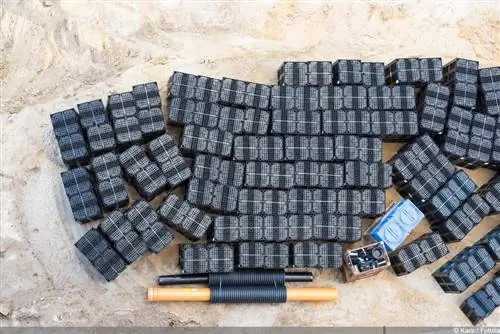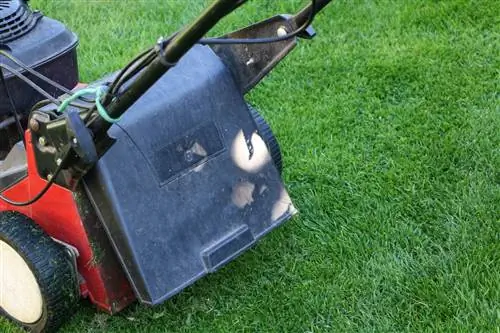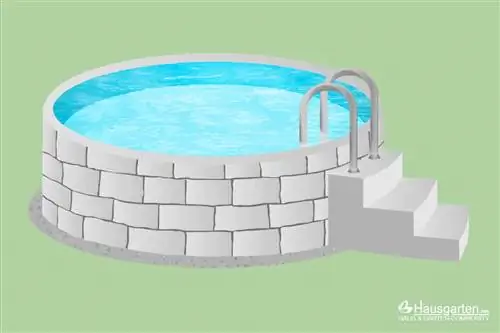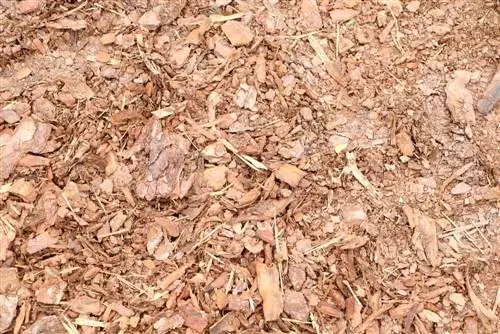- Author admin [email protected].
- Public 2023-12-17 03:39.
- Last modified 2025-06-01 06:48.
The infiltration of rainwater must be ensured to avoid flooding. Normally the water seeps into the ground and no further mechanisms are needed. However, in dense buildings, seepage is no longer guaranteed. If a classic infiltration system made of gravel cannot be installed, as is the case in metropolitan areas, for example, trench infiltration is a very effective alternative. There are various systems that can be adapted to local conditions.
Infiltration - safe drainage of rainwater
The installation of trench infiltration takes place in regions where the natural drainage of water is no longer guaranteed. The natural cycle of water is no longer guaranteed due to very dense development in cities and metropolitan areas. Roads, paved paths and a dense building structure prevent rainwater from seeping into the ground unhindered. The result would be flooding, which can occur not only after heavy rain, but even after light rain. Infiltration systems made of plastic, which are inserted into the ground, provide a solution.
Infiltration systems in a modular system
The infiltration systems consist of individual elements, so-called trenches. These can be adapted in shape and structure to individual needs. The advantage of this solution is that it can be used anywhere, regardless of the type of land and type of development. It is an advantage if the trenches are planned and integrated into the ground during the construction phase.
Alternatively, it is also possible to install an infiltration system later. The costs are determined in advance and are based on the dimensioning of the system. Compared to classic infiltration, which is created via a base filled with gravel, trenches have various advantages. This means they can be installed cost-effectively and expanded if necessary thanks to the modular system.
Create written requirements planning
Rigolen are made of plastic and can be connected to each other in a kind of plug-in system. This is an advantage for you because you can connect the system together the way you need it. In order to realize this, it is necessary that you calculate the requirements in advance. To do this, you should know which route you want to lay the trenches. Straight laying is not always possible. If you need to make loops or curves, you will need more material. Therefore, invest enough time in careful planning. A scale drawing is very helpful if you want to plan the route adequately.
This little schedule can help you measure your needs:
- Determine the route along which you want to run the system
- Dimension of the route in meters, taking into account loops and curves
- Planning the need for trenches based on commercially available dimensions
- Determination of the accessories necessary for installation.
Based on this planning, you can order the trenches and get an overview of the cost factor. Rigoles are commercially available individually. Alternatively, you can decide to order a package consisting of several trenches. You can save money by purchasing a package of multiple items. The structure of the trench system should be designed so that it can be expanded if necessary.

If there is no further planning planned for the room in question, decide to conclude first. There are special elements for this that you can remove again if an extension is planned. Since the space required for installing the trenches is very small, you remain very flexible in your further planning and can always act according to your individual needs.
Calculation of the costs for infiltration with trenches
Rigolen are sold individually or in a package. The prices can vary between individual manufacturers, so a price comparison is recommended and beneficial. Furthermore, the prices depend on the size and shape of the trenches. The construction costs are added to the total costs. These include, among other things, the excavation and closure of the excavation pit, but also the laying of the trenches and the commissioning of the entire system.
In practice, a connection to an existing system is often required. Alternatively, you can also decide to install a completely new system and adapt the calculation accordingly. The costs for one unit for setting up a drainage infiltration system are between 95 and 180 EUR. The total cost depends on how many units you need and which system you choose.
Seepage and retention systems
This is a very robust plastic solution that can even be driven over by heavy vehicles. The systems are available from 95 EUR per piece and can be easily combined with each other.
Seepage blocks and shaft systems
The seepage blocks are installed underground and can be expanded into a shaft system in which rainwater can drain away very safely. This method requires a little more space and is therefore not suitable for all regions. Prices for an element start from around 100 EUR.
Seepage tunnel
The seepage tunnel can be purchased starting at a price of around 180 EUR. Here too, it is possible to connect different elements together. The advantage of the seepage tunnel is that it requires very little space and can also be easily installed later in a small space. The total cost depends on the size of your project. Together with the items for the execution of the construction project, you must expect to pay at least EUR 2,000. Large projects, however, must be planned from EUR 5,000 upwards.






